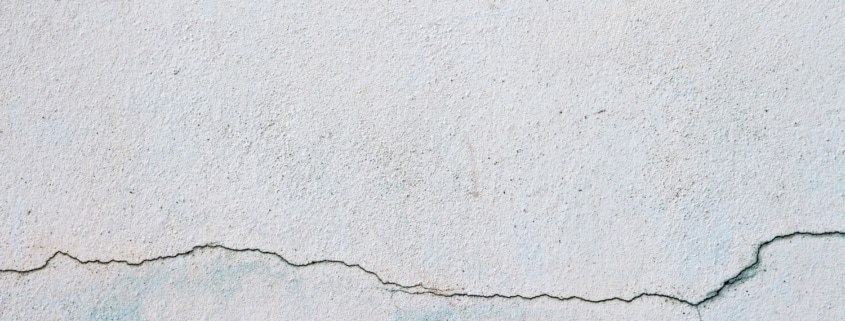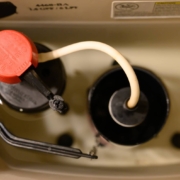Is Fixing Stucco Holes or Cracks a DIY Project?
Stucco is a popular choice for home exteriors. It looks great, stands up well to the elements, and gives your house a solid, finished feel. But over time, even stucco can show signs of wear—maybe you’ve spotted a crack zigzagging across your wall or noticed a small hole where it shouldn’t be. The big question becomes: Is fixing stucco holes or cracks something I can handle myself, or should I call in a professional?
The answer depends on what’s going on beneath the surface. Let’s break it down.
Why Do Stucco Holes and Cracks Happen?
Stucco might seem rock-solid, but it’s more flexible than you’d think. That’s what makes it durable, but it also means it shifts and moves over time, especially with changing weather or ground movement. These shifts can cause cracks, chips, or holes to form.
Here are a few common reasons why:
- Foundation settling: Homes settle slowly over time, and that movement can tug on the stucco, causing small cracks to appear.
- Weather exposure: Hot, cold, wet, dry—Florida weather doesn’t hold back. Repeated expansion and contraction from temperature changes (especially freeze-thaw cycles in colder climates) can stress stucco surfaces.
- Impact damage: Sometimes, it’s as simple as a stray baseball or a bump from lawn equipment. Even minor hits can leave behind a dent or hole.
- Poor installation: If the original stucco job wasn’t done properly (maybe the mix was off or the layers weren’t applied correctly) it’s more likely to crack or wear prematurely.
Not every crack or hole is a red flag, though. Hairline cracks, for example, are normal and expected. They often happen as the stucco cures and the house naturally shifts.
But the size and pattern of these cracks can tell you a lot about what’s happening behind the scenes.
Types of Stucco Damage
- Hairline cracks (less than 1/16 inch wide): These are common and usually just affect the surface. They don’t let moisture in, and they’re mostly about looks.
- Wider cracks or holes (more than 1/8 inch wide): These can be risky. They give water a pathway behind your stucco, where it can lead to hidden damage like mold, rot, or deterioration of the wall underneath.
- Patterned cracking (like stair-steps or spiderwebs): This type of cracking could mean your home’s foundation is shifting, or there’s more stress on certain parts of the wall. These patterns often show up near doors, windows, or corners.
Can You Fix Stucco Yourself? Here’s Where DIY Makes Sense
Let’s answer the big question: Is fixing stucco holes or cracks a DIY project?
If you’re looking at small, surface-level cracks, ones that are less than 1/8 inch wide, and there are no signs of moisture, staining, or structural shifting, DIY might be a safe bet.
You can find basic stucco repair kits at home improvement stores, and they typically cost between $20 and $50.
These kits come with patching material designed to seal small cracks and holes. Here’s what the process looks like:
- Clean the area: Remove loose debris and dust from the crack or hole.
- Apply the patch: Use a trowel or putty knife to work the patching material into the damaged area.
- Blend the texture: This is where things get tricky. Stucco has that rough, patterned surface that gives it character. Matching that texture by hand isn’t always easy.
- Paint: Once it dries, you’ll need to paint over the patch to match the rest of the wall.
The Risks of DIY Stucco Repair
There’s nothing wrong with trying to save money on home repairs, but when it comes to stucco, a quick patch job can sometimes create more problems than it solves.
- Improper sealing: If the crack or hole isn’t sealed correctly, water can still sneak in behind the wall. Even a tiny leak can cause moisture buildup, which leads to mold, rot, and damage to the home’s framing.
- Recurring cracks: If the root cause of the damage (whether it’s moisture or structural movement) hasn’t been addressed, those cracks will likely come back, maybe even worse than before.
- Curb appeal concerns: Stucco is one of the first things people see when they look at your home. A patch that doesn’t blend well can hurt the overall look, and even affect the resale value.
What Does Professional Stucco Repair Cost?
For minor repairs, like small cracks or holes, a professional repair typically costs between $250 and $800, depending on the size and difficulty of matching the texture.
If there’s extensive damage or signs of moisture problems behind the stucco, the repair could cost $1,000 or more.
While that might sound like a lot, professional repairs prevent bigger issues, like mold remediation or structural repairs, which can cost thousands more down the road.
Stucco Maintenance Tips to Keep Your Walls Strong
- Inspect your stucco regularly: Look for new cracks, holes, or stains at least once a year. Pay close attention after storms or major weather swings.
- Seal and repaint every 5 to 10 years to protect against moisture (source: National Association of Home Builders).
- Check your gutters and downspouts: Make sure water isn’t splashing or draining directly onto your stucco walls.
- Keep plants and shrubs trimmed back from the walls. This helps airflow and reduces the chance of moisture building up.
When to Call a Professional
- Cracks wider than 1/8 inch
- Recurring or spreading cracks
- Moisture stains or soft spots near cracks
- Patterned cracks like stair-step or web shapes, especially near windows or doors
Conclusion
So, is fixing stucco holes or cracks a DIY project? Sometimes. For small, surface cracks, a DIY patch might do the trick. But when it comes to bigger cracks, recurring damage, or anything that looks suspicious, it’s worth getting a professional opinion.
Not sure if your stucco damage is just cosmetic? Schedule an inspection with Inside & Out. We’ll help you figure out what’s really going on so your home stays strong and beautiful for years to come.















